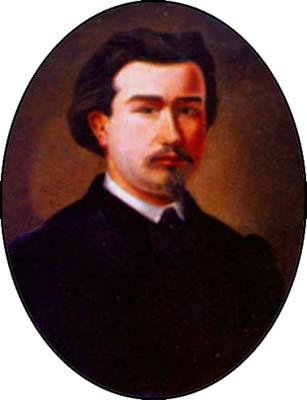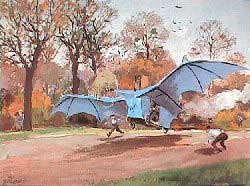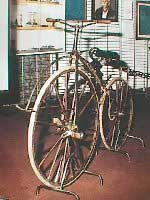Clément Ader

Clément Ader was the only son of François Ader, a carpenter. He had an inquisitive, inventive mind and took an interest in bird flight at a very young age. After the baccalaureate, he studied at the Institut Assiot in Toulouse, graduating in 1860. Ader joined the Compagnie des Chemins de Fer du Midi de la France railroad company in 1862 and worked there until 1866, when he started filing his first patents, in particular for the "rubber bicycle" in 1868. After 1873, Ader focused more of his attention more to aviation, building models, making many plans many drawings and trying to resolve the problems of manned flight: wing load, the propeller's effectiveness, etc. Meanwhile, he filed a patent for an invention that improved the telephone and invented the theatre-phone in 1881, enabling him to amass a comfortable fortune.
From 1885 to 1890, Ader worked on his prototype, Eole, a "winged device for aerial navigation called the Avion", which he patented on 19 April 1890 and experimented on 9 October of the same year on the grounds of the de Gretz-Armainvilliers château: the flight was 50 meters long. Ader continued his work in secret, improving the engine's performances. His goal was to build another aircraft, Avion 2, for which he signed a contract with the army. But high costs combined with military spending cuts in 1894 forced him to give up on the project.
Ader was able to finance his third prototype, Avion 3, which he finished in 1897 and tested in Satory on 12 and 14 October 1897; this time, the aircraft flew a distance of 300 meters. In 1902, however, Ader abandoned his aviation work because the army had withdrawn funding and he was unable to meet the costs alone. He retired to his Muret estate in 1905. The next year, when Santos Dumont took off in an aeroplane in Bagatelle, the French press hailed him as "the first Frenchman to fly", prompting Ader to leave retirement and bring his work to the public's attention. He published La première étape de l'aviation militaire (The First Step in Military Aviation) in 1907 and L'aviation militaire (Military Aviation) in 1909, in which he expounded his views on aircraft's role in future wars. His work's value and importance were recognised late in life, when he was named a Commander of the Legion of Honour in 1922.

Décollage de l'Eole - Gouache de Georges Beuville. Source : Musée Ader - Muret

Le véloce-caoutchouc. Source : Musée Ader - Muret

